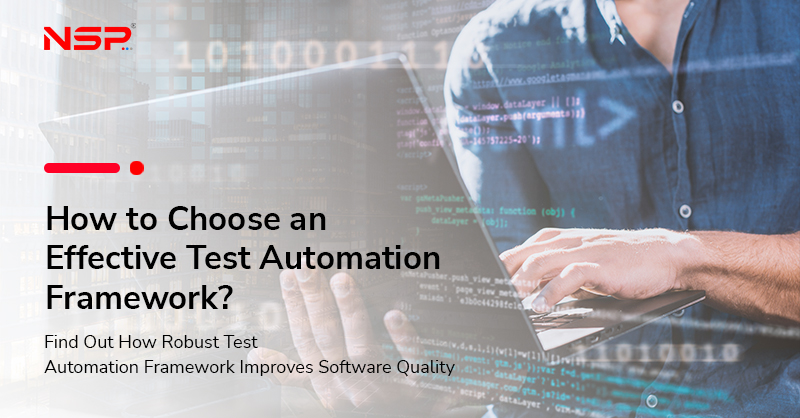Understanding IIoT maturity model: Achieving operational excellence
admin
October 17, 2023
Industrial Automation
The Industrial Internet of Things (IIoT) has revolutionized the way organizations operate, driving digital transformation and unlocking operational efficiencies in a variety of industries. However, achieving true operational excellence requires a deeper understanding of the IIoT Maturity Model and its various components. This comprehensive guide aims to provide readers with a holistic understanding of the IIoT Maturity Model and its role in achieving operational excellence.
The Evolution of the IIoT Maturity Model
Before diving into the components of the IIoT Maturity Model, it is important to understand its evolution over time. The IIoT Maturity Model has been refined and expanded over the years to keep up with the rapidly evolving industrial landscape.
The concept of Industry 3.0 marked the beginning of industrial automation where machines were controlled by computers. The focus of Industry 4.0, on the other hand, is on integrating physical systems with digital technologies to create a connected, intelligent and autonomous system. This shift has led to the development of the IIoT Maturity Model, which provides a framework for organizations to assess their digital maturity and identify areas for improvement.
From Industry 3.0 to Industry 4.0
Industry 3.0 was characterized by mechanization and mass production. It was a time when computers were first introduced to the industrial landscape, and machines were controlled by computer programs. This marked a significant shift from the manual control of the past and paved the way for the development of Industry 4.0.
Industry 4.0 is defined by smart factories, digitalization, and automation. The focus is on creating a connected ecosystem where machines, people, and processes are all seamlessly integrated. This enables organizations to achieve greater efficiency, reduce costs, and improve quality.
Key Drivers of the IIoT Maturity Model
There are several key drivers that have propelled the growth of the IIoT Maturity Model. One of the primary drivers is the need for increased efficiency. As competition in the industrial landscape has intensified, organizations have been forced to find ways to do more with less. The IIoT Maturity Model provides a roadmap for achieving greater efficiency by identifying areas for improvement and providing a framework for implementing changes.
Cost reduction is another key driver of the IIoT Maturity Model. By leveraging digital technologies and automation, organizations can reduce costs associated with manual labour, maintenance, and downtime. This enables them to remain competitive and invest in growth opportunities.
Improved quality is also a key driver of the IIoT Maturity Model. By integrating physical systems with digital technologies, organizations can achieve greater precision and accuracy in their operations. This leads to improved product quality and customer satisfaction.
Enhanced safety is another important driver of the IIoT Maturity Model. By automating dangerous or repetitive tasks, organizations can reduce the risk of injury to their employees. This not only improves safety, but also boosts morale and productivity.
Finally, the growth of digitalization has been a major driver of the IIoT Maturity Model. As more organizations embrace digital technologies, the need for a framework to assess their digital maturity has become increasingly important. The IIoT Maturity Model provides a standardized approach for organizations to evaluate their digital readiness and identify areas for improvement.
The IIoT Maturity Model is a framework that organizations can use to assess their level of maturity in terms of IIoT implementation. This model comprises five stages, each representing a certain level of maturity in IIoT implementation. These stages are Ad Hoc, Foundational, Competitive, Innovative, and Visionary. In the Ad Hoc stage, organizations use IIoT technologies in an ad hoc and unstructured manner. Their focus is primarily on fixing immediate problems rather than on long-term strategic planning. This stage is characterized by a lack of standardization and a lack of integration between different IIoT technologies.
In the Foundational stage, organizations have established a basic IIoT infrastructure and are beginning to integrate IIoT technologies into their operations. They have a better understanding of the benefits of IIoT, and they are starting to develop a strategy for IIoT implementation. However, they still face challenges such as data silos and a lack of IIoT expertise. In the Competitive stage, IIoT technologies are an integral part of the organization's operations, and there is a strong focus on optimizing processes and driving efficiency.
Organizations at this stage have a well-defined IIoT strategy and are using IIoT technologies to gain a competitive advantage in their industry. In the Innovative stage, organizations are actively exploring new use cases for IIoT technologies and are leveraging advanced analytics and machine learning to drive innovation and improve decision-making. They are using IIoT technologies to create new business models and revenue streams, and they are constantly experimenting with new ways to use IIoT technologies.
In the Visionary stage, IIoT technologies are fully integrated into all aspects of the organization, driving continuous improvement and enabling the organization to deliver superior value to customers. Organizations at this stage have a culture of innovation and are constantly pushing the boundaries of what is possible with IIoT technologies.
Assessing your organization's current maturity level is critical to identifying areas for improvement and developing a roadmap for IIoT implementation. To assess your organization's maturity level, you need to consider factors such as your organization's goals, the extent of IIoT adoption across your organization, and the level of IIoT expertise within your organization. There are several key performance indicators (KPIs) that organizations can use to measure their level of IIoT maturity.
These KPIs include operational efficiency, cost reduction, quality improvement, safety enhancement, and improved customer experience.
In summary, the IIoT Maturity Model is a useful framework that organizations can use to assess their level of maturity in IIoT implementation. By understanding the different stages of IIoT maturity and the key factors that contribute to each stage, organizations can develop a roadmap for IIoT implementation and drive continuous improvement in their operations.
Achieving Operational Excellence through IIoT
The goal of IIoT implementation is to achieve operational excellence - a state of continuous improvement that enables an organization to deliver superior value to its customers. Achieving operational excellence requires a holistic approach to IIoT implementation, which includes the integration of IIoT technologies, data analytics, and asset performance management.
Operational excellence is not just about implementing new technologies, it's about using those technologies to optimize processes and make data-driven decisions that drive efficiency and reduce costs. By achieving operational excellence, organizations can improve their bottom line and gain a competitive advantage in their industry.
Integrating IIoT Technologies into Your Operations
The first step towards achieving operational excellence is to integrate IIoT technologies into your operations. This involves identifying the processes and systems that can be improved through IIoT implementation and leveraging IIoT technologies such as sensors, actuators, and connectivity solutions to create a connected system.
IIoT technologies can be used to monitor and control various parameters of operations. For example, Sensor Networks, Telemetry Systems, Condition Monitoring, Asset Tracking, Energy Management, Predictive Analytics, Supply Chain Optimization, Robotics and Automation. Sensors can be used to monitor the temperature and humidity of a production environment, while connectivity solutions can be used to track the location of goods in transit.
By integrating IIoT technologies into your operations, you can gain greater visibility into your processes and make data-driven decisions to optimize efficiency and reduce costs.
Leveraging Data Analytics for Improved Decision-Making
Data analytics is a key enabler of IIoT implementation and is critical to driving operational excellence. By analysing data from a variety of sources, including sensors, machines, and other IIoT devices, organizations can gain valuable insights into their operations and make informed decisions to optimize processes and drive efficiency.
Advanced analytics tools, such as machine learning algorithms and predictive analytics, can be used to identify patterns and trends in data that may be difficult to detect manually. By leveraging these tools, organizations can make more accurate predictions about future events and take proactive measures to prevent issues before they occur.
Data analytics can also be used to optimize maintenance schedules and reduce downtime. By analysing data from IIoT devices, organizations can identify potential issues with equipment and schedule maintenance before a failure occurs, reducing the risk of unplanned downtime and increasing overall efficiency.
Enhancing Asset Performance Management
Another important component of achieving operational excellence is asset performance management. By leveraging IIoT technologies to monitor assets in real-time, organizations can proactively identify issues and optimize asset performance to reduce downtime and improve efficiency.
Sensors and other IIoT devices can be used to monitor various aspects of asset performance, from temperature and vibration to energy consumption and overall utilization. By collecting and analysing data from these devices, organizations can identify potential issues and take proactive measures to prevent downtime and optimize asset performance.
Asset performance management can also be used to optimize maintenance schedules and reduce costs. By analysing data from IIoT devices, organizations can identify which assets require maintenance and schedule maintenance at the optimal time to minimize downtime and reduce costs.
In conclusion, achieving operational excellence through IIoT implementation requires a holistic approach that includes integration of IIoT technologies, data analytics, and asset performance management. By leveraging these technologies and approaches, organizations can make data-driven decisions to optimize processes, reduce costs, and gain a competitive advantage in their industry.
Overcoming Challenges in IIoT Implementation
While IIoT implementation offers significant benefits, it is not without its challenges. Addressing these challenges is critical to ensuring successful IIoT implementation and achieving operational excellence.
Addressing Security and Privacy Concerns
One of the primary concerns associated with IIoT implementation is security. IIoT systems are vulnerable to cyber-attacks, and organizations need to take steps to ensure the security of their IIoT systems and data.
Ensuring Interoperability and Standardization
Interoperability and standardization are critical to the success of IIoT implementation. IIoT devices and systems need to be able to communicate with each other seamlessly, and there needs to be a standard set of protocols to ensure interoperability across different systems and devices.
Managing Change and Workforce Adaptation
Finally, one of the biggest challenges associated with IIoT implementation is managing change and workforce adaptation. Organizations need to invest in training and education to ensure that their workforce has the skills and knowledge needed to operate IIoT systems successfully.
Conclusion
By understanding the IIoT Maturity Model and its various components, organizations can take a holistic approach to IIoT implementation and achieve operational excellence. While there are challenges associated with IIoT implementation, addressing these challenges is critical to unlocking the full potential of IIoT and driving digital transformation in a variety of industries.
Previous Post
AI – driven process automation
Recent News artical
Fresh job related news content posted each day

October 23, 2023
Digital Transformation as a service
Today Digital Transformation As a Service (DXaaS) is a popular choice for...
Read more
October 23, 2023
Securing financial services: Role of MFA Verification
As per the projections, cybercrime is predicted to cost the global economy...
Read more
October 23, 2023
How to choose an effective test automation framework?
In today's fast-paced software development industry, having a reliable and efficient automation...
Read more